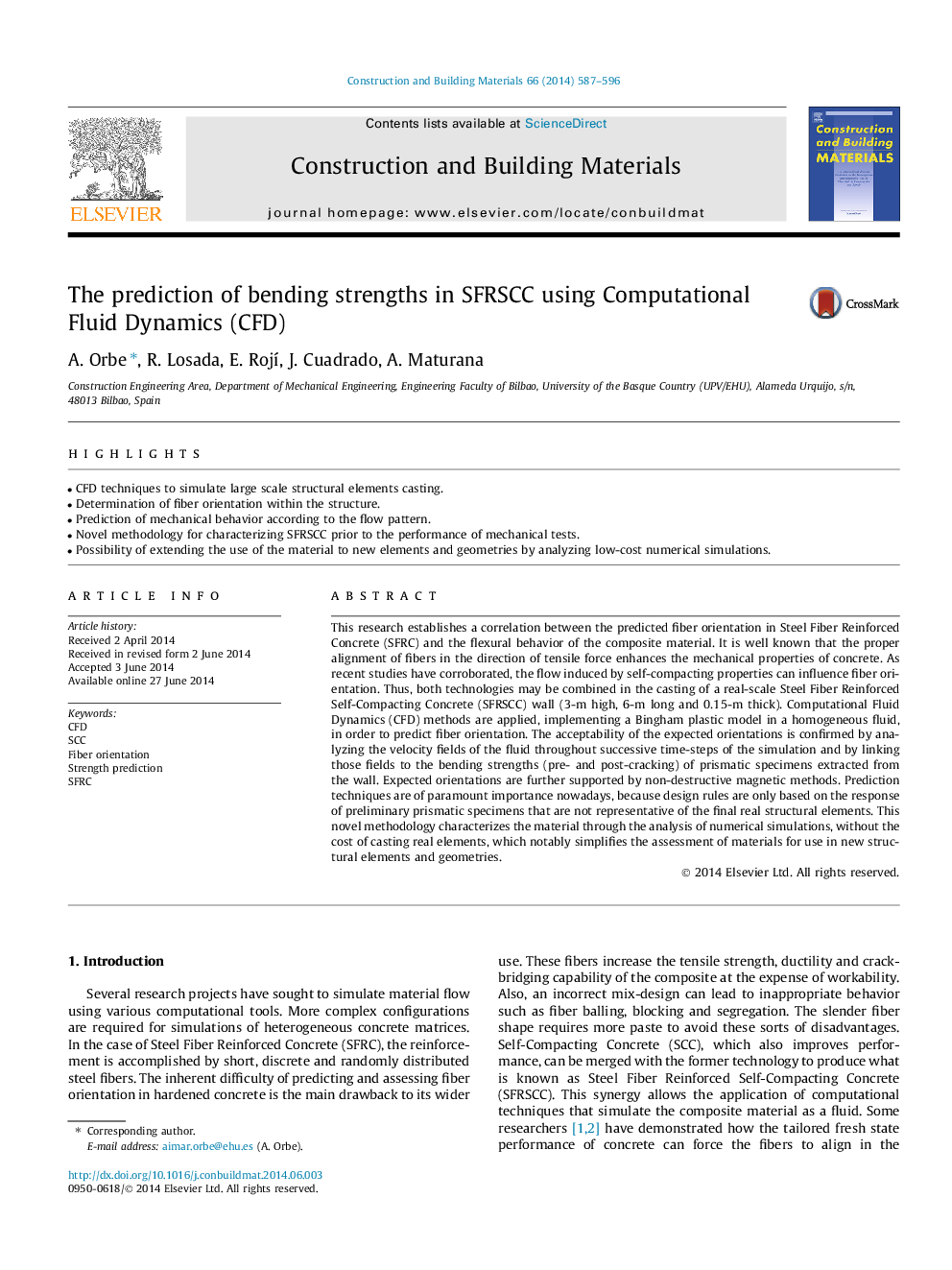| Article ID | Journal | Published Year | Pages | File Type |
|---|---|---|---|---|
| 6722942 | Construction and Building Materials | 2014 | 10 Pages |
Abstract
This research establishes a correlation between the predicted fiber orientation in Steel Fiber Reinforced Concrete (SFRC) and the flexural behavior of the composite material. It is well known that the proper alignment of fibers in the direction of tensile force enhances the mechanical properties of concrete. As recent studies have corroborated, the flow induced by self-compacting properties can influence fiber orientation. Thus, both technologies may be combined in the casting of a real-scale Steel Fiber Reinforced Self-Compacting Concrete (SFRSCC) wall (3-m high, 6-m long and 0.15-m thick). Computational Fluid Dynamics (CFD) methods are applied, implementing a Bingham plastic model in a homogeneous fluid, in order to predict fiber orientation. The acceptability of the expected orientations is confirmed by analyzing the velocity fields of the fluid throughout successive time-steps of the simulation and by linking those fields to the bending strengths (pre- and post-cracking) of prismatic specimens extracted from the wall. Expected orientations are further supported by non-destructive magnetic methods. Prediction techniques are of paramount importance nowadays, because design rules are only based on the response of preliminary prismatic specimens that are not representative of the final real structural elements. This novel methodology characterizes the material through the analysis of numerical simulations, without the cost of casting real elements, which notably simplifies the assessment of materials for use in new structural elements and geometries.
Related Topics
Physical Sciences and Engineering
Engineering
Civil and Structural Engineering
Authors
A. Orbe, R. Losada, E. RojÃ, J. Cuadrado, A. Maturana,
